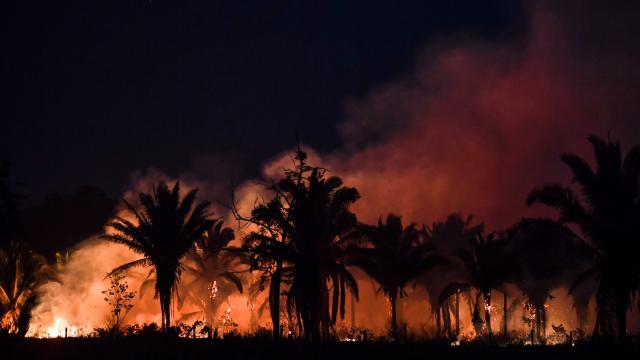The Amazon is the world’s largest tropical rainforest, covering an area roughly the size of Australia. And yet it and other large ecosystems could be gone within our lifetime.
In a new paper published on Tuesday in Nature Communications, scientists analysed data on 42 land and water environments of various sizes, from small ponds to the entire Black Sea. They found that larger ecosystems took longer to collapse under environmental pressure, but that the rate at which larger ecosystems transform is significantly faster than the pace of change for smaller systems. As a result, ecosystems that are thousands of years old could take just decades to collapse.
“We intuitively knew that big systems would collapse more slowly than small ones due to the time it takes for impacts to diffuse across large distances,” John Dearing, a Professor in Physical Geography at the University of Southampton who led the research, said in a statement. “But what was unexpected was the finding that big systems collapse much faster than you might expect—even the largest on Earth only taking possibly a few decades.”
Big ecosystems are made up of smaller sub-systems of habitats. That modular nature initially makes the larger systems more resilient to stressors like drought or logging. But once they pass a certain tipping point, the rate of change speeds up. That’s because the same problems could affect every smaller sub-system at once.
Take the Amazon rainforest, for instance. The forest is an important carbon sink, meaning the trees sequester carbon from the atmosphere. But as the ecosystem is deforested and is subjected to hotter and drier conditions due to the climate crisis, the rate at which it sequesters carbon is declining. The paper finds that the stress put on the Amazon to-date has already pushed it dangerously close to a tipping point, and the risk of crossing it could come as early as 2021. Once it crosses the point of no return, the ecosystem could collapse entirely in just 49 years.
“You can imagine it like a fire,” said Simon Willcock, who co-authored the paper, in a video about the findings. “A very small fire doesn’t burn very hot, so a log in that fire takes a long time to disappear. With a larger fire, it gets hotter, and therefore the same log disappears faster.”
Coral reefs will face crucial tipping points, too. Caribbean coral reefs sustain a quarter of the Earth’s marine species. The study found that when both overfishing and ocean warming and acidification reach a certain point, that ecosystem will rapidly become unstable, and may take just 15 years to collapse.
To be clear, this doesn’t necessarily mean the Amazon will collapse in 49 years, or that the Carribean coral reefs will take exactly 15 years to degrade. The study is not a forecast. Rather, it shows how quickly massive changes can take place.
Once ecosystems collapse, others replace them. Within 50 years of reaching a tipping point, the study shows the Amazon rainforest could become a savannah-type ecosystem made up of trees and grasses. That’s terrifying, because that kind of ecosystem would sequester far less carbon from the atmosphere.
“The messages here are stark. We need to prepare for changes in our planet’s ecosystems that are faster than we previously envisaged,” said Dearling.
To slow this degradation, we need to preserve biodiversity. The study found that more diverse systems fare better than those dominated by a single keystone species. Elephants, for instance, have a disproportionately large impact in ecosystems where they’re prevalent. They play an essential role in keeping their ecosystems alive, pushing over trees and dispersing seeds over vast distances. But elephants need a particular set of conditions to survive, and if an ecosystem becomes unsustainable for elephants, the whole thing can quickly degrade.
By contrast, in more complex ecosystems with a wide variety of interacting species, populations of particular species can rise and fall because losing a key player isn’t so catastrophic with other creatures jumping in to fulfil their ecological role.
Erika Berenguer, a senior research associate at the University of Oxford and Lancaster University, told the Guardian she believes the study makes claims that are too sweeping because relies too much on data describing lakes and oceans to be useful as an indicator of what would happen to rainforests.
But Louis Verchot, a scientist on the UN’s Intergovernmental Panel on Climate Change (IPCC) who worked on their landmark 2019 land use report, said that even though the study shouldn’t be taken to mean that the Amazon itself will collapse in 49 years, the authors’ call to preserve biodiversity is important.
“We are seeing levels of ecosystem change that are more rapid than were predicted several years ago and our understanding of environmental change has increased greatly over the past two decades,” he told Earther in an email. “The take home message [is] that as a society we are on the path for multiple environmental tipping points.”
He said in the short term, deforestation may create more profits for logging and agricultural industries, but reports like this illustrate how short-sighted that drive to maximise profits really is.
“I think Professor Dearing’s call for society to reassess our trajectory and halt the ongoing widespread environmental degradation in the name of short term financial gain needs to be taken seriously,” he said.
